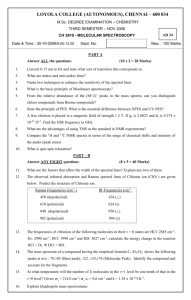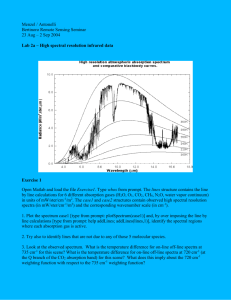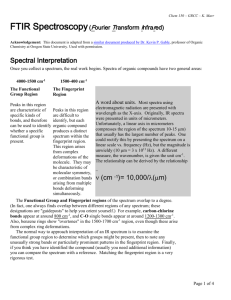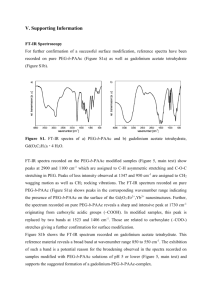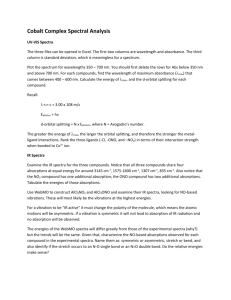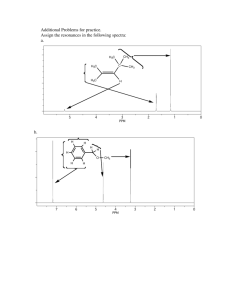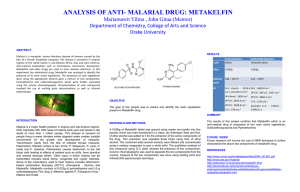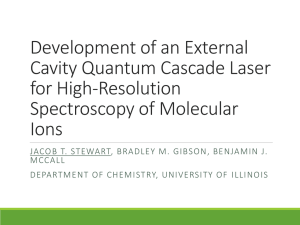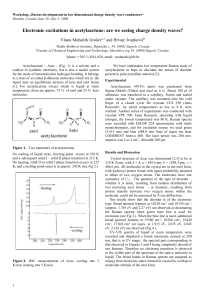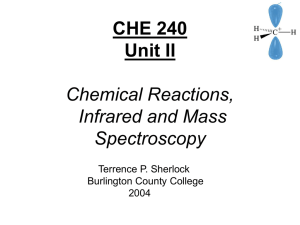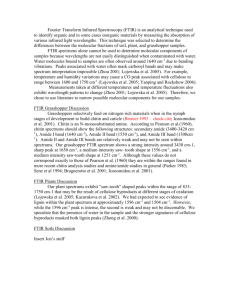High-Resolution Spectroscopy of the ν8 Band of Methylene Bromide
advertisement
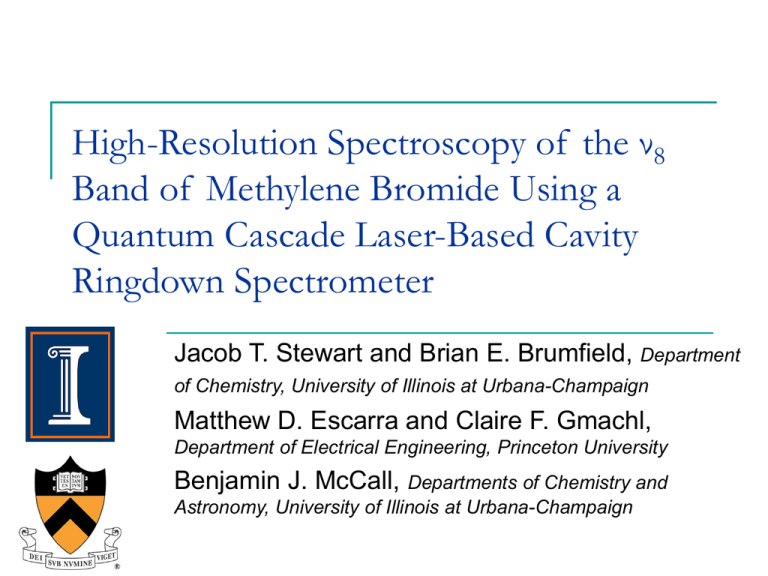
High-Resolution Spectroscopy of the ν8 Band of Methylene Bromide Using a Quantum Cascade Laser-Based Cavity Ringdown Spectrometer Jacob T. Stewart and Brian E. Brumfield, Department of Chemistry, University of Illinois at Urbana-Champaign Matthew D. Escarra and Claire F. Gmachl, Department of Electrical Engineering, Princeton University Benjamin J. McCall, Departments of Chemistry and Astronomy, University of Illinois at Urbana-Champaign Why a Quantum Cascade Laser-Based Spectrometer? C60 spectroscopy at ~8.5 μm in order to perform an astronomical search Quantum cascade lasers (QCLs) offer performance necessary for high-resolution spectroscopy at this wavelength How do QCLs work? Semiconductor laser based on stacks of quantum wells Lasing occurs through transitions within the conduction band Different frequencies possible by changing thickness of quantum wells Each QCL has limited tunability Testing our QCL Spectrometer Decided on methylene bromide as a test molecule No previous highresolution work in IR Probe of temperature conditions in supersonic jet •ν8 band of CH2Br2 ~1197 cm-1 •Tuning range of our QCL ~1182-1200 cm-1 Initial Layout of QCL Spectrometer 800 μm pinhole PC-MCT Experimental Spectra and Spectrometer Performance Reference (SO2) Spectrum Wavemeter CH2Br2 Spectrum Noise equivalent absorption = 1.4×10-8 cm-1 Linewidth = 40 - 60 MHz Step size = ~21 MHz (0.0007 cm-1) Sensitivity = 5×10-8 cm-1Hz-1/2 Assigning the Spectrum 79 79 79 81 81 81 Three isotopologues: Abundance •CH279Br2 1 •CH279Br81Br 2 •CH281Br2 1 Two Br isotopes with almost equal abundance (79Br & 81Br) Near-prolate top Ground state rotational constants known from microwave Fitting done using PGOPHER PGOPHER, a Program for Simulating Rotational Structure, C. M. Western, University of Bristol, http://pgopher.chm.bris.ac.uk Room Temperature Spectra Room Temperature Spectra Room Temperature Spectra Jet-Cooled Spectra Experimental Spectrum of Jet-Cooled Sample Combination Trot = 300 K Simulated spectrum Trot = 7 K B. E. Brumfield, J. T. Stewart, S. L. Widicus Weaver, M. D. Escarra, S. S. Howard, C. F. Gmachl, B. J. McCall, Rev. Sci. Instrum. (2010), 81, 063102. Molecular Constants Molecule ν0 (cm-1) A’ (cm-1) CH279Br2 1196.98363(99) 0.8634519(22) 0.00035 20 CH279Br81Br 1196.95797(12) 0.8626649(28) 0.00045 22 CH281Br2 0.8619108(23) 0.00044 20 1196.93206(12) Avg. |o-c| (cm-1) # lines assigned Improvements to the Spectrometer PC-MCT Faster detector (PVMCT from Kolmar) Using a 150 μm×12 mm slit instead of 800 μm pinhole Ten times smaller current step size New piezo driver to increase ringdowns per second New mirror mounts with flexible bellows PV-MCT New and Improved Spectra Not Noise! Noise equivalent absorption = ~4×10-9 cm-1 Linewidth = ~10 MHz Step size = ~2.4 MHz (0.00008 cm-1) Sensitivity = ~8×10-9 cm-1 Hz-1/2 Conclusions Quantum cascade lasers are useful light sources for high-resolution infrared spectroscopy We have constructed the first QCL-based cwringdown spectrometer coupled with a supersonic expansion source We have obtained and assigned the previously unobserved rotational structure of the ν8 band of methylene bromide What’s Next? Collect high-resolution spectrum of pyrene (C16H10) Collect high-resolution spectrum of C60 Dealing with Back-Reflection Ringdown Cavity Fresnel rhomb uses total internal reflections to act like a quarter wave plate Laser Polarizer ZnSe Frsenel Rhomb Acknowledgments Brian Siller Andrew Mills Richard Saykally Kevin Lehmann Funding •NASA •Packard Foundation •Dreyfus Foundation •University of Illinois
